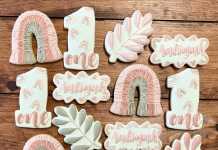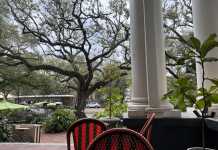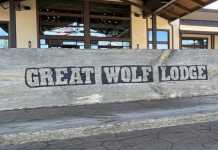We have dozens of family travel tips on New Orleans Mom. If you are looking for longer adventures, check out this list of budget friendly road trips from New Orleans.
Road Trips From New Orleans
After 15 months of becoming very familiar with my house, I was finally able to satisfy my wanderlust with a family road trip. Although my dreams of international travel are still on hold for now, I was nevertheless able to rack up a few passport stamps… the national parks version.

What is a National Parks Passport?
A National Parks Passport is a step above the usual travel keepsake, and serves as a way to document your journeys across the country. It’s about the same size as a regular passport, and has pages where you can add stamps and stickers from the sites you visit. The cancellation stamps are dated, and are located at visitor center kiosks where kids can do the actual stamping part themselves.
When you open up the passport there’s a clear compartment that holds a map of the National Park System. It’s a real-life paper map, which is something my 4-year-old had never seen before. Although I don’t enjoy trying to fold it, in the era of GPS reliance I do want my kids to learn “traditional” map skills. Plus you can see all the sites that make up the National Park System, which is great for tracking your route and planning your next adventure.
You can buy a National Parks Passport at your destination for about $10, or you can order one online here. All proceeds support the parks. You certainly don’t need the passport to visit or appreciate any of the sites, but I definitely recommend it as a fun way to engage the whole family in your travels.
 Get Your Stamps
Get Your Stamps
- Select your destination and hit the road. Participating locations include national parks, monuments, seashores, and more. You can download a full list of participating locations here, or keep reading for suggestions that are relatively close to New Orleans. If you have a 4th grader in your family, you can get free entry into the national parks for an entire year.
- Find your destination’s visitor center. Once you’re there, I’d recommend talking to a park ranger. They’re very knowledgeable, give helpful advice to get the most from your visit, and tend to be great with kids. They can also direct you to the self-serve passport stamping kiosk.
- Locate the stamping kiosk and open up your passport. The stamps are color-coded to correspond with a specific region in the United States, and your passport booklet is also divided into color-coded sections. This step is a fun color-matching game for younger kids, and can build older kids’ understanding of cardinal directions.
- Stamp away! Kids of any age can do this part. Start with the official cancellation stamp (which has the date of your visit) but don’t stop the fun there. You’ll probably find 1-2 other stamps at your kiosk, and there’s plenty of space to fit a few in your passport. Add a sticker too.
Locations Within Driving Distance from New Orleans
Here are ten location ideas to get you started, listed in order of driving distance from New Orleans. If you want to be sure you can find the passport stamps I’d recommend calling ahead and asking for the specific location of the visitor center. If you’re hesitant about a longer drive, these tips will help.
- New Orleans, LA: New Orleans Jazz National Historical Park (near Jackson Square)
- Marrero, LA: Jean Lafitte National Historical Park & Preserve (30 minutes drive)
- Natchez, MS: Natchez Trace Parkway (3 hours drive)
- Perdido Key, FL: Gulf Islands National Seashore (3.5 hours drive; Ship Island is a closer Gulf Islands destination, but is currently closed for repairs)
- Bermuda, LA: Cane River Creole National Historical Park (4 hours drive)
- Epps, LA: Poverty Point National Monument (4 hours drive; read about a local mom’s visit here)
- Kountze, TX: Big Thicket National Preserve (4.5 hours drive)
- Birmingham, AL: Birmingham Civil Rights National Monument (5 hours drive)
- Hot Springs, AR: Hot Springs National Park (7.5 hours)
- Gatlinburg, TN: Great Smoky Mountains National Park (9.5 hours drive)
Teaching History
A family excursion to a national park, historic monument, or other area with geographic significance is an opportunity to have fun, make memories, and learn something new. It’s also an opportunity to build our kids’ awareness that our country has a complicated and oftentimes cruel history. When you visit a national park with your kids, challenge yourself to discuss tough topics, even if your kids are young. Visitor centers stock kid-friendly nonfiction books with hyper-local information, which can provide a helpful entry point into these conversations. Find out about and honor the earliest populations of the land you’re visiting. Read aloud from signs and plaques that tell about less-celebrated regional heroes. Discuss the environmental threats to our natural wonders and the importance of conservation efforts. Kids will understand more than we anticipate, including the role they play in what’s to come.

















